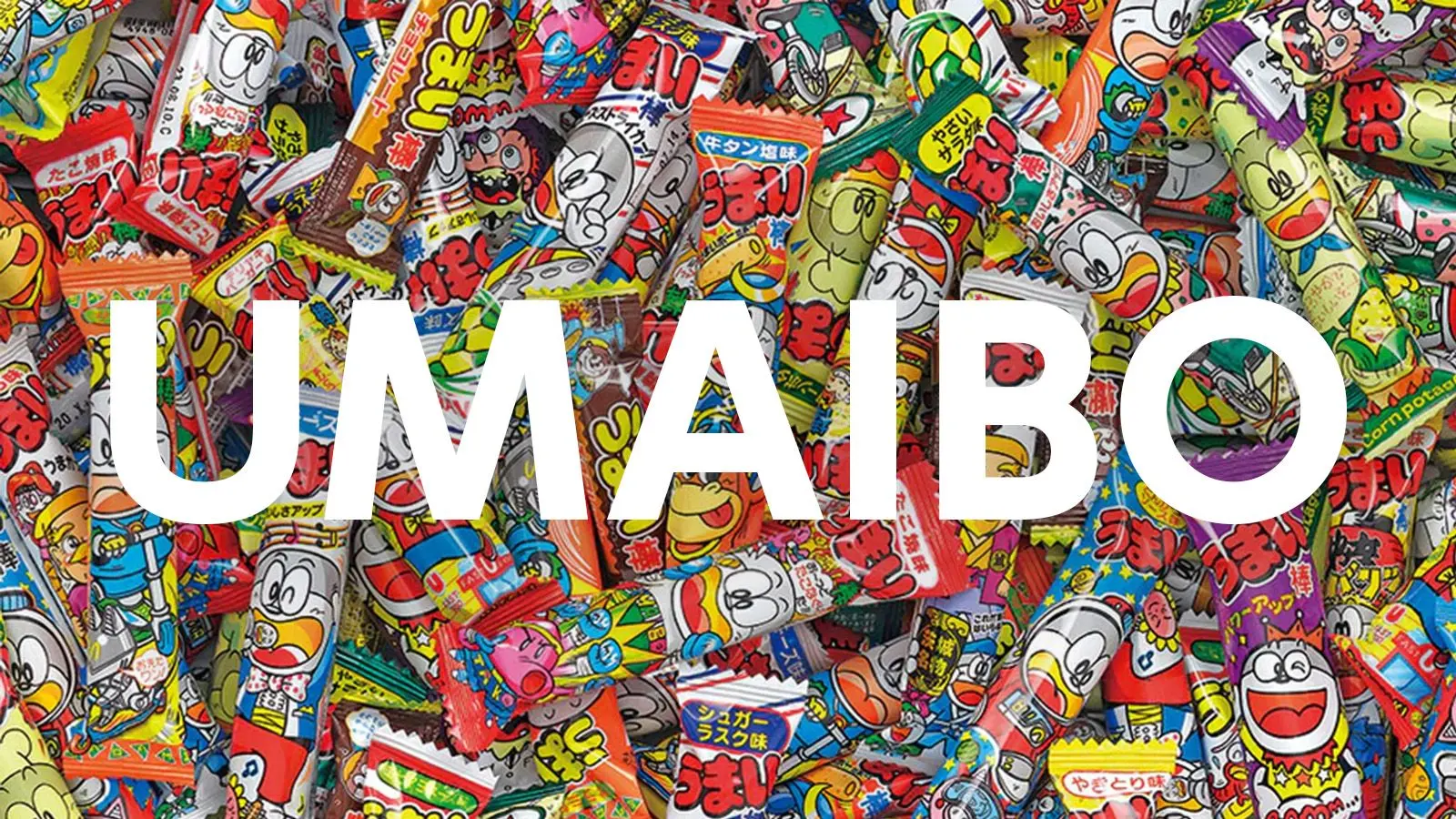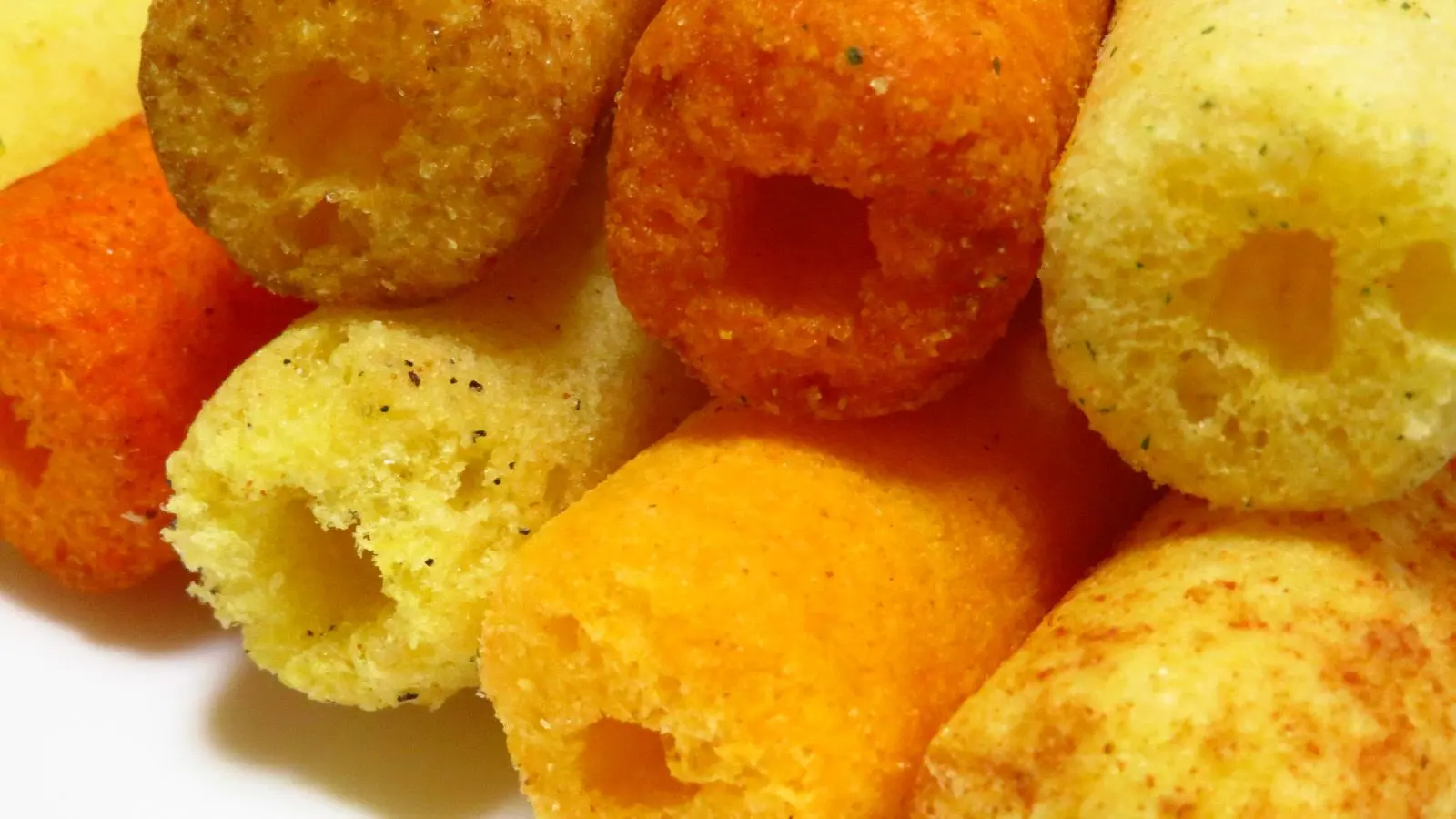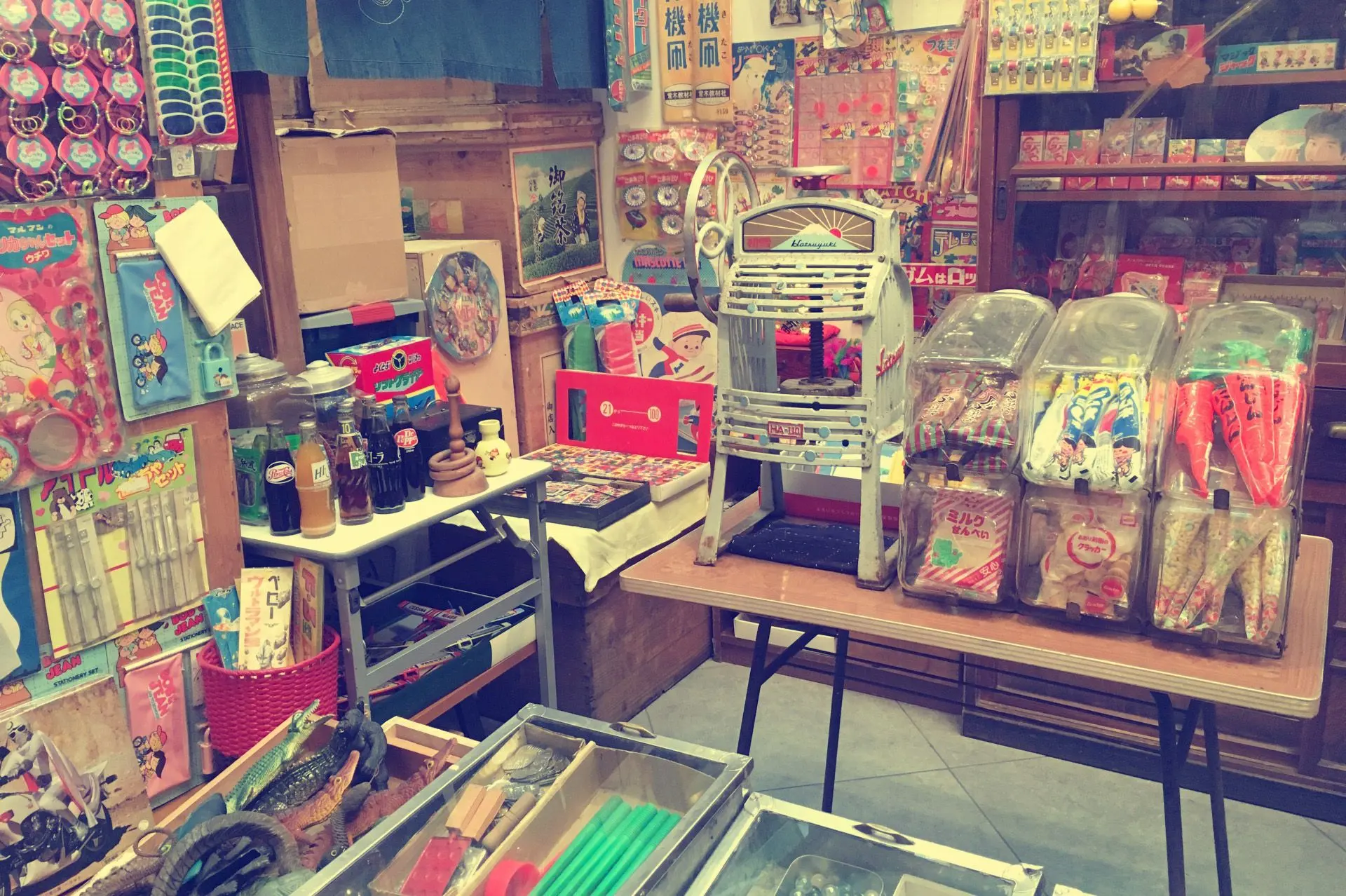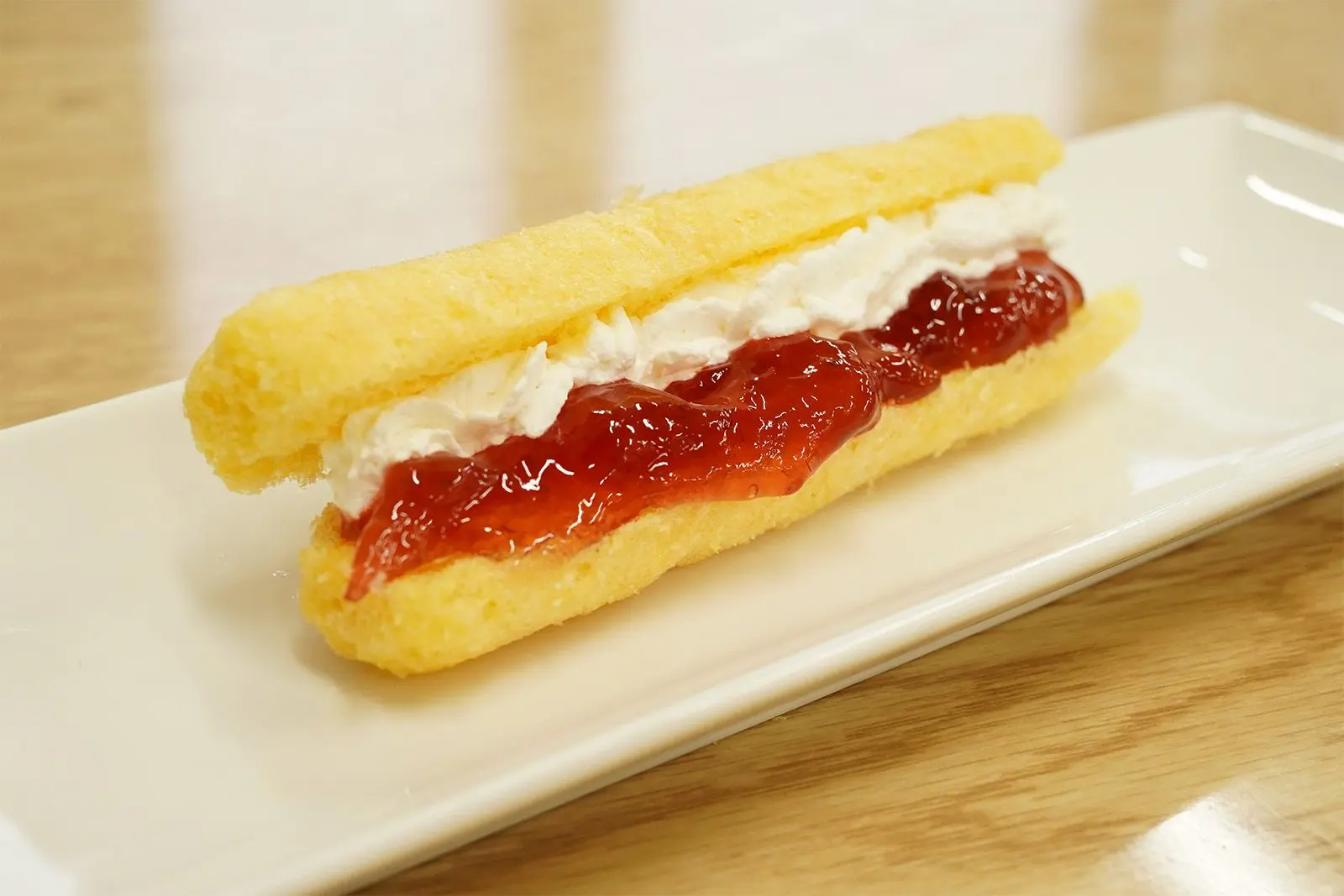Japan’s King of Dagashi: Umaibo—A 15-Yen Snack Wonderland

This legendary snack, found in Japanese convenience stores and supermarkets for just 15 yen, is called “Umaibo.”
If you've been to Japan, you've definitely seen it—those slim, colorful packages lined up quietly on a shelf.
For just 15 yen, you get a punch of bold flavor and an unforgettable personality.
That’s right, we’re talking about Umaibo, the reigning king of Japan’s dagashi (cheap snack) scene.
Since its debut in 1979, more than 60 flavors have been released—each with its own fanbase. Umaibo is a collector’s dream and a cultural icon.
This article breaks down the snack’s irresistible charm, its history, its mascot, and how it’s becoming a surprise hit overseas.
What is Umaibo?
"Umaibo" is a cylindrical puffed corn snack—crispy outside, hollow inside.
Pop it in your mouth, and you’re hit with a nostalgic yet addictive burst of flavor.

- Length: Approx. 11 cm (palm-sized)
- Texture: Light and crunchy
- Price: Just 15 yen (tax included) = ultimate value
Whether you’re feeling snacky or just want something extra, Umaibo delivers satisfaction without breaking the bank.
Lightweight and compact, it’s also perfect as a souvenir or for group gifting.
Buy it, bite it, love it—that’s the Umaibo experience.
photo by photoAC
Quick History of Umaibo

Umaibo launched in 1979 at just 10 yen per stick. It quickly became a staple in dagashi shops across Japan—a “dream snack” affordable even to kids.
Distributed by Yaokin and manufactured by snack maker Riska, the duo has maintained the Umaibo brand for over 40 years.
Maintaining that 10-yen price was no accident—it took strategy and innovation.
The hollow center lightened the texture and cut costs.
Bold flavors and flashy packaging kept it satisfying, while the production lines stayed highly cost-efficient—true to the spirit of Showa-era ingenuity.
It began with three flavors—salami, sauce, and curry—in 1979. By 1980, cheese, burger, and salad flavors joined in.
Over time, Umaibo grew to include over 60 flavors, ranging from local specialties to joke flavors, making it a true piece of Japan’s B-level food culture.
photo by photoAC
Flavor Variety That’s Straight-Up Insane
Since the debut “sauce flavor” in 1979, Umaibo has launched over 60 flavors—including both classics and head-scratchers.

Classics: Mentai, cheese, corn potage, salami, takoyaki, and more.
Take corn potage, for example—a creamy soup transformed into a crunchy snack.
Mentai has a spicy kick, perfect with drinks. Takoyaki smells just like a street food stall.

Wildcards: Shrimp mayo, natto (yep, it’s sticky), chocolate, sugar rusk, teriyaki burger.
Natto flavor is notorious for replicating that sticky texture (!).
Sweet options like chocolate and sugar rusk make for a solid dessert snack.
And with regional and seasonal releases, flavor hunters are always on the prowl.
photo by Yaokin
Let’s Talk About the Mascot: Who’s Umaemon?

That blue alien-looking guy on the packaging? His name is Umaemon.
While some say he resembles a certain four-dimensional cat, he’s 100% original.
He’s got a detailed backstory too—like a younger sister named “Umami-chan” and a job as the “Umaibo Professor.”
He also changes outfits depending on the flavor, making him a hidden dress-up mascot with a quiet cult following.

photo by Yaokin
The End of the 10-Yen Era

Once hailed as the ultimate 10-yen snack, Umaibo finally raised its price in 2022 to 12 yen, and as of 2025, it’s now 15 yen.
Rising ingredient and logistics costs made the change inevitable.
Even so, Umaibo remains a super affordable treat.
The shift from “10 → 12 → 15 yen” became a symbol of changing times—trending on social media and sparking waves of nostalgia.
photo by TBS newsdig
Yep, You Can Cook with Umaibo Too!

“Wait, Umaibo in recipes?” Believe it.
On the official Yaokin recipe site, you'll find several ways to turn Umaibo into surprisingly legit dishes.
It’s not just a gimmick—they’re tasty, creative, and easy to try at home.
Don’t knock it till you crunch it.
photo by Yaokin Media
Gaining Steam Overseas
In Japan, it’s a nostalgic snack.
But overseas, Umaibo is a total culture shock in stick form—a novelty that anime fans, tourists, and YouTubers are embracing.
With its wild packaging, flavor spectrum, and price point, Umaibo is now a must-buy souvenir.
Some travelers even stuff their suitcases with as many sticks as they can fit.
Where to Buy It

You’ll find Umaibo nearly everywhere in Japan—convenience stores, supermarkets, and Don Quijote.
But if you're after rare flavors or Umaemon merch, check out the Rakudaya dagashi shop.
They offer collector packs, limited editions, and even Umaibo-themed goods. It’s a paradise for serious fans.
photo by Yaokin
Rakudaya Store Info
- Address: 5F, Soka Marui, 2-9-1 Takasago, Soka-shi, Saitama Google MAP
- Phone: 048-951-7897
- Hours: 10:30–20:00
- Access: 2-min walk from Soka Station (Tobu Skytree Line)
- Official Website
You Can Get Umaibo Outside Japan—But It’ll Cost You
Yes, Umaibo is now available worldwide.
Yaokin exports to the U.S., China, Korea, Thailand, France, and more. About 10% of all Umaibo production is for overseas.
- USA: Sold on Amazon and in Japanese supermarkets—available in 20-stick and full 60-flavor sets.
- Korea, Taiwan, Thailand, Indonesia: Found in local shops and some regional flavors exist.
- France, Germany: Sold at Asian food markets and anime conventions.
- Online: Amazon, eBay, Sugoi Mart, and more offer global shipping.
Some countries even get localized versions, like Kimchi Umaibo in Korea.
Its price and small size make it a go-to item for “Japan lucky bags” and anime-themed snack boxes.
Bottom line—Umaibo is no longer just a snack; it’s part of Japan’s global pop culture export.
RAW JAPAN Comment
Umaibo isn’t just a snack—it’s a 15-yen pop culture icon.
From convenience stores in Tokyo to gift bags in Paris, this humble corn stick is spreading joy worldwide.
Whether it’s your first Umaibo or your 50th, part of the fun is choosing your flavor: “Mentai? Cheese? Corn potage?”
Next thing you know, you’re diving deep into the weird and wonderful world of natto or chocolate flavors.
What starts as a casual buy could just become your new obsession—and a crunchy gateway into the playful heart of Japanese food culture.
Source
This article is based on information provided by Riska Co., Ltd. and Yaokin.
Photo credits: Yaokin official site © Yaokin / Nippon Broadcasting System NEWS ONLINE
Obsessed with Japan’s quirks, and a father of two. I hunt for those subtle, “wait, what?” moments that hide in everyday life.
